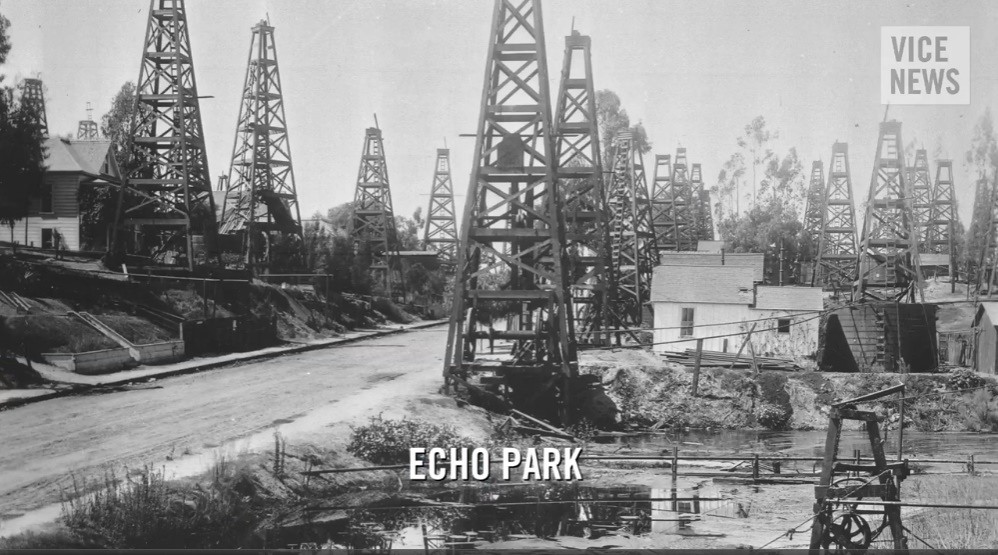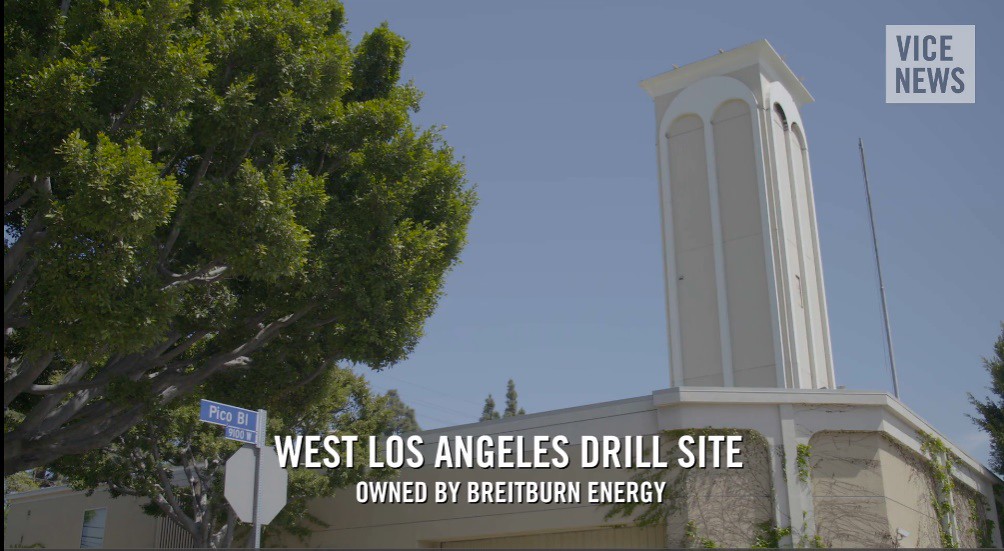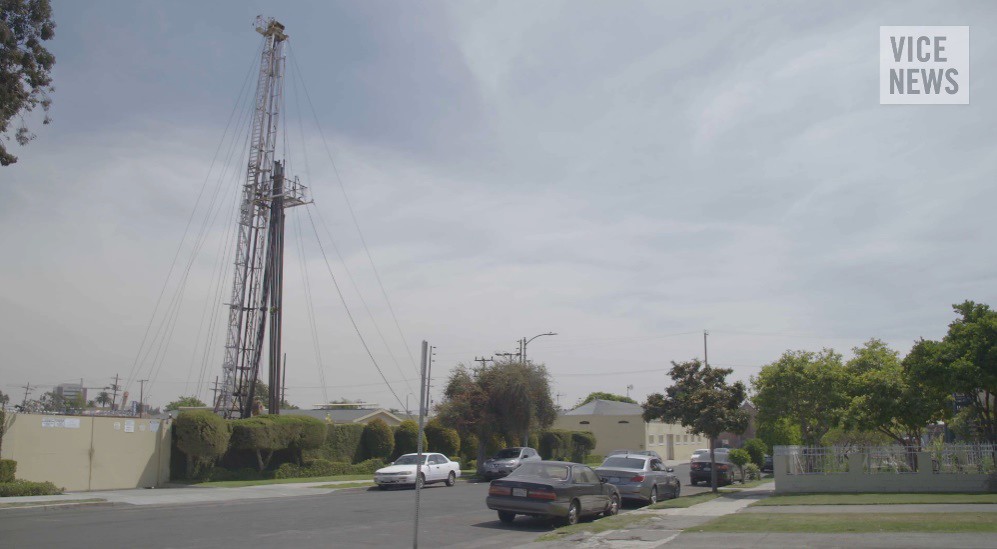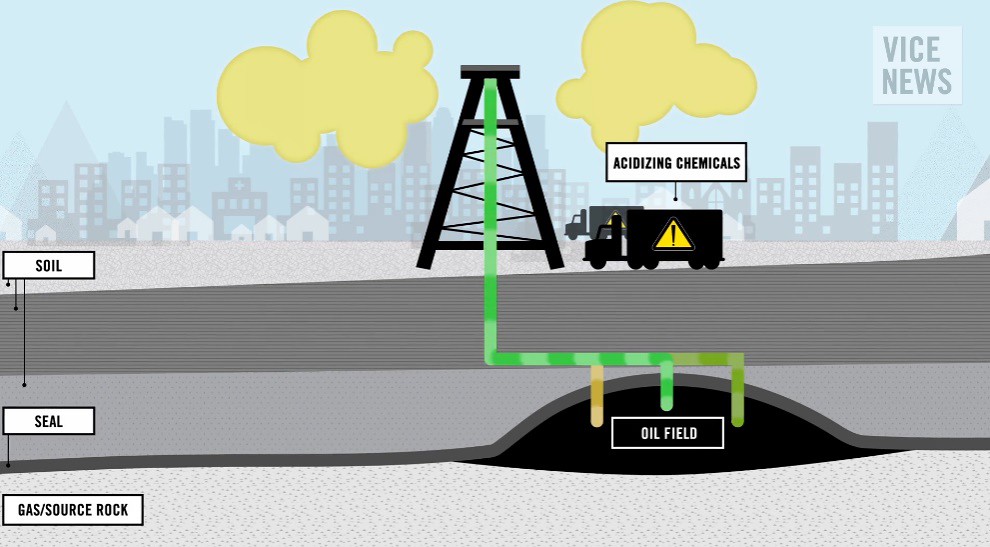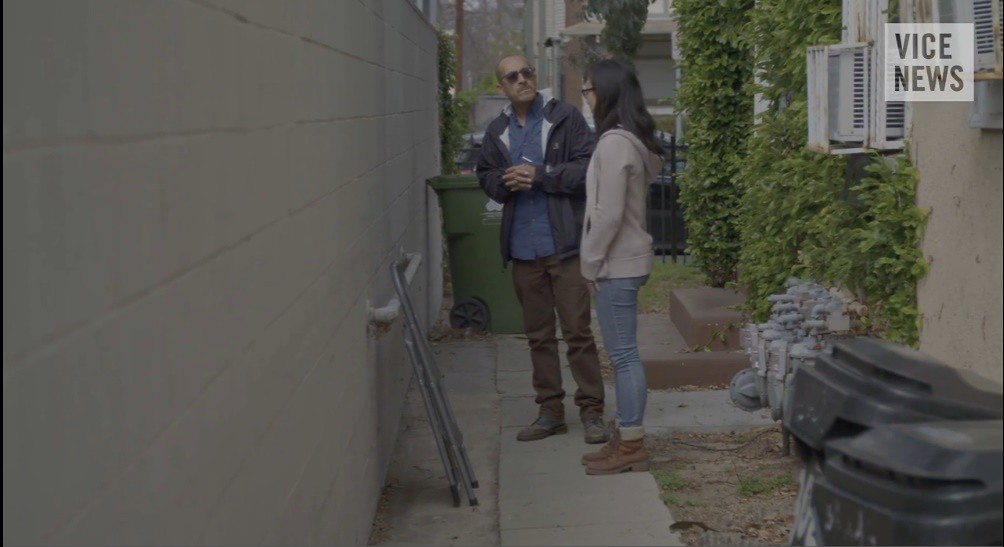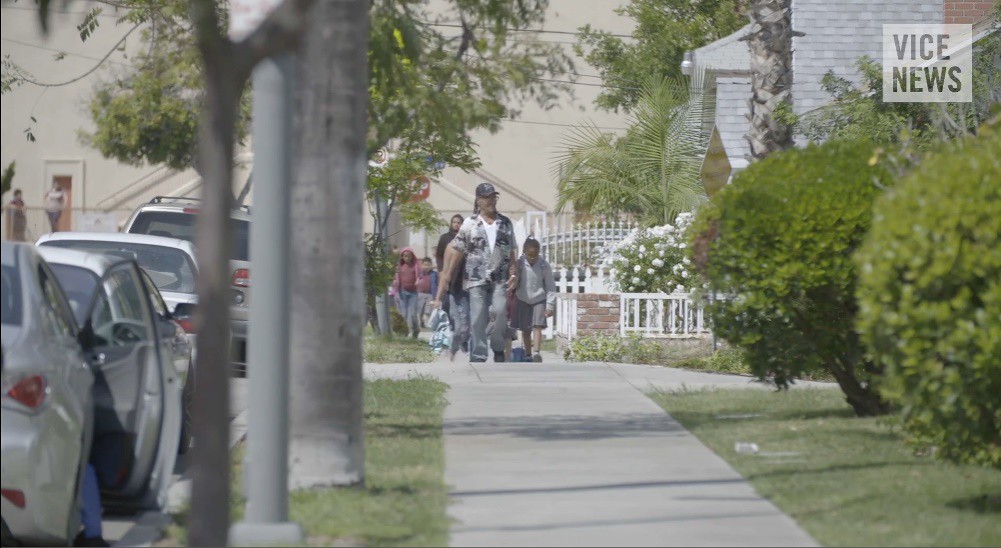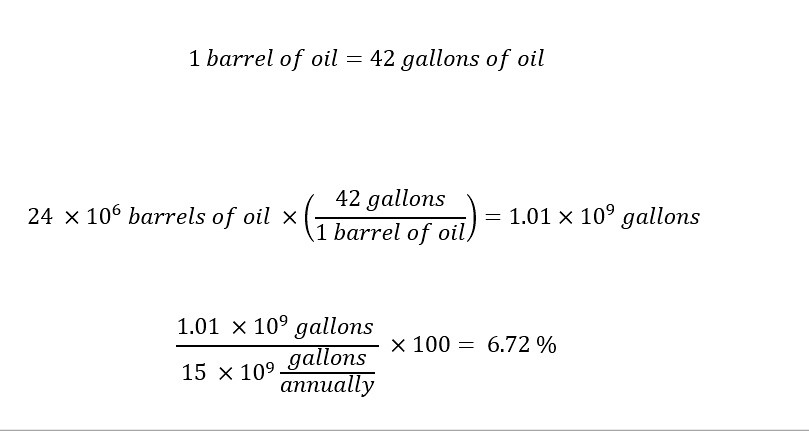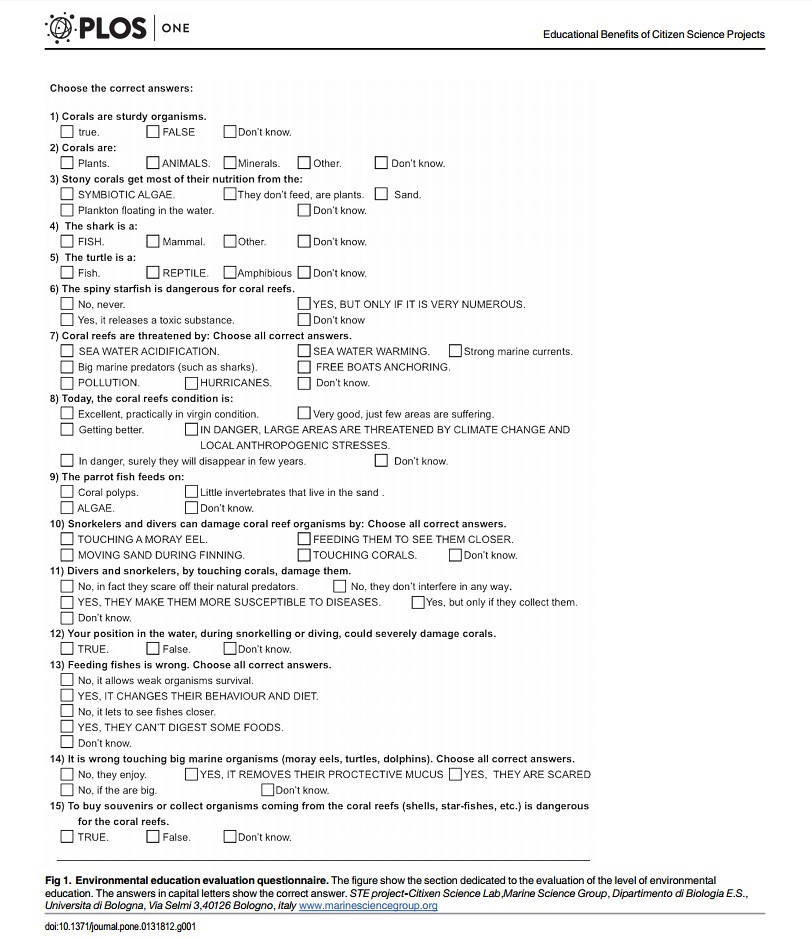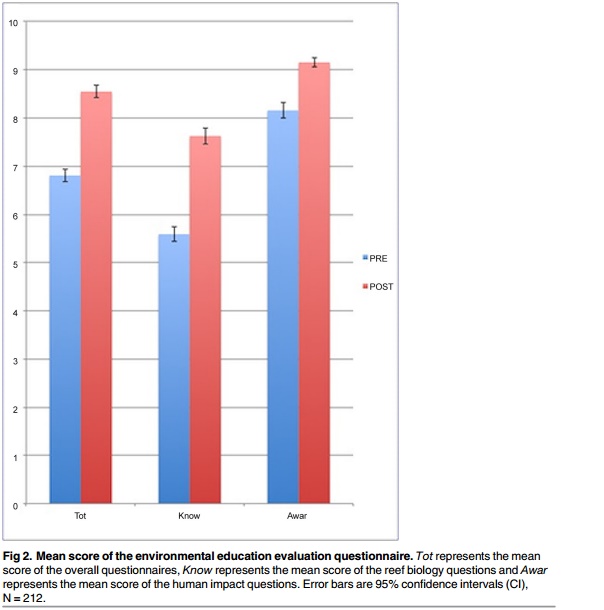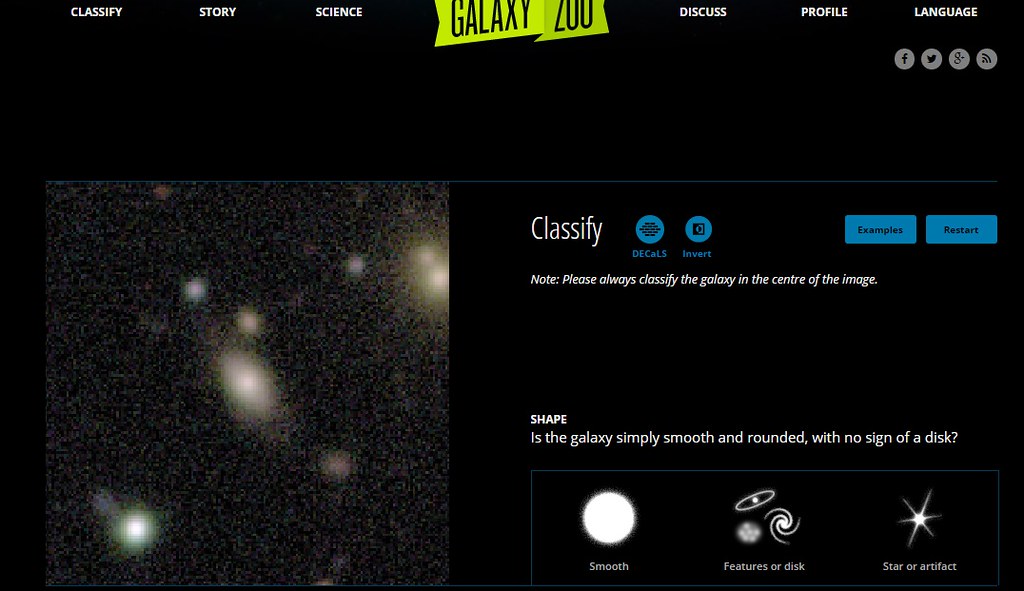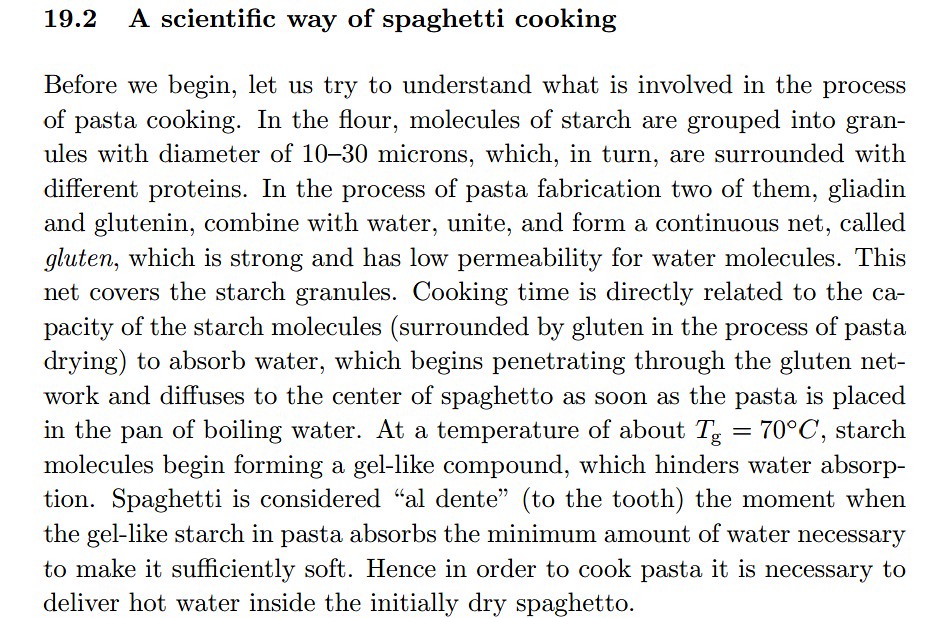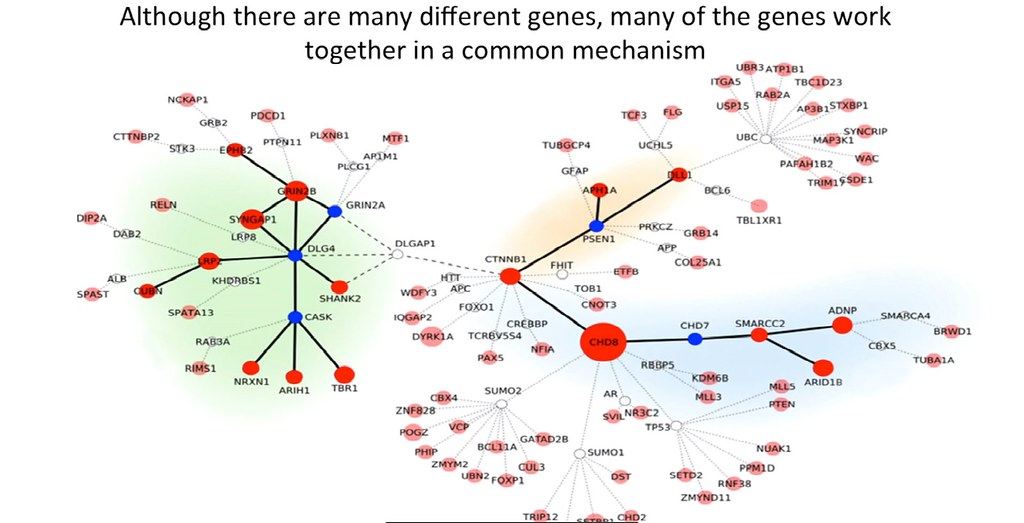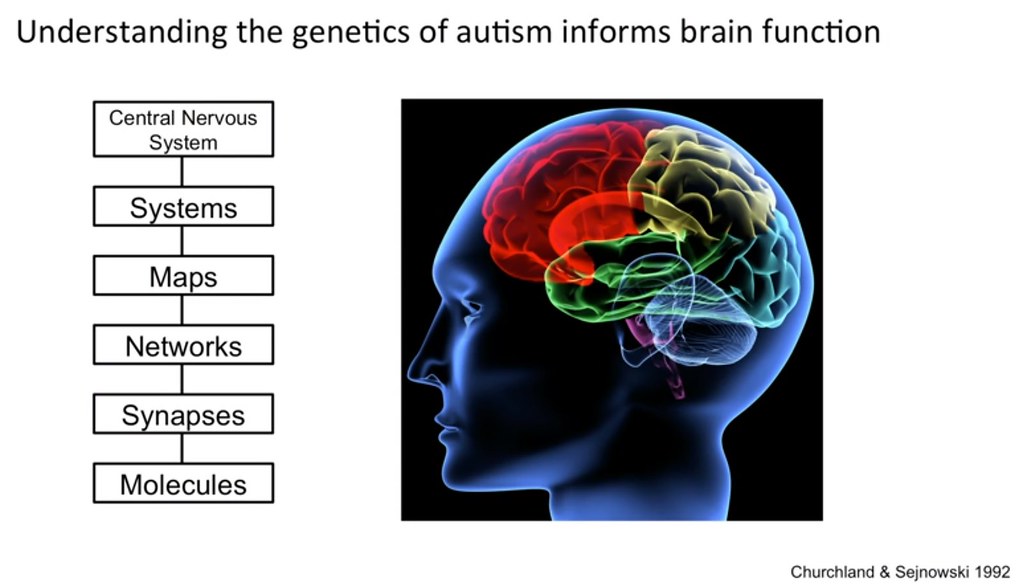There is a tremendous amount of information to learn about the world around us. Too much to learn in a single human lifespan. On top of that, there are a huge number of perspectives by which to view the world from ( a scientific, medical, historical, sociological, anthropological, geological, political, etc.) that I almost get a panic attack when I entertain the idea. I love to learn. Regardless of perspective, the overall goal is to learn about the world around us. Furthermore, to learn how we came to and survive in the world around us. This invariably involves us as participants.
The more educated we are about the world, the better the world will be to live in. Recently, I learned that if you teach a citizen of the world a small amount of science -- the result is that you will get (a percentage of the time) a "citizen scientist."
How do I know this is true? Read paragraphs below to find out.
What Is Citizen Science?
When I first heard the term "citizen science" I was a bit confused. In my mind, we should all strive to learn about science. Not necessarily to the degree that I (or my colleagues) understand science. On a similar note, we should strive to learn about history. Why?
To learn about the past, is to learn about the course we need to take in the future. At least this is my belief! Of course, some might argue that there exists an underlying assumption in that statement: that we learn from our past mistakes. Yes, certainly. I agree.
Citizen science can be defined according to our good friend "
Wikipedia" as follows:
Citizen science (CS) (also known as crowd science, crowd-sourced science, civic science, volunteer monitoring or networked science) is scientific research conducted, in whole or in part, by amateur or nonprofessional scientists. Citizen science is sometimes described as "public participation in scientific research", participatory monitoring and participatory action research.[1]
If we take that a step further and look toward the entry into the
Oxford English Dictionary (from "
Wikipedia") we see:
The terms citizen science and citizen scientists entered the Oxford English Dictionary in June 2014.[5] Citizen science is defined as scientific work undertaken by members of the general public, often in collaboration with or under the direction of professional scientists and scientific institutions,[6] and citizen scientists, in the modern sense, are defined as "a scientist whose work is characterized by a sense of responsibility to serve the best interests of the wider community" or "'a member of the general public who engages in scientific work, often in collaboration with or under the direction of professional scientists and scientific institutions'" an amateur scientist.[6]
Having the public engage in science experiments can be extremely useful.
An Example Of Citizen Science
Recently, I read an article that was published on an open access journal website called
PLOS titled "
Participating In A Citizen Science Monitoring Program: Implications For Environmental Education." These journals are open access - which means that the data that is published is free to the public. Click on the titled and you will be directed to the article. There are a variety of subjects that each have a different PLOS site. In future posts, I will discuss more about the benefits and drawbacks of having "open access" journals -- mostly the benefits -- because I sincerely believe in them.
The research published in the study was very exciting. I just happen to run across the article and I was super happy to have done so. I was inspired by the work. The work reinforces the concept that if you teach the public about science (or the marine world), then the environment will eventually be a better place. Here is the abstract to the journal article:
Tourism is of growing economical importance to many nations, in particular for developing countries. Although tourism is an important economic vehicle for the host country, its continued growth has led to on-going concerns about its environmental sustainability. Coastal and marine tourism can directly affect the environment through direct and indirect tourist activities. For these reasons tourism sector needs practical actions of sustainability. Several studies have shown how education minimizes the impact on and is proactive for, preserving the natural resources. This paper evaluates the effectiveness of a citizen science program to improve the environmental education of the volunteers, by means of questionnaires provided to participants to a volunteer-based Red Sea coral reef monitoring program (STEproject). Fifteen multiple-choice questions evaluated the level of knowledge on the basic coral reef biology and ecology and the awareness on the impact of human behaviour on the environment. Volunteers filled in questionnaires twice, once at the beginning, before being involved in the project and again at the end of their stay, after several days participation in the program. We found that the participation in STEproject significantly increased both the knowledge of coral reef biology and ecology and the awareness of human behavioural impacts on the environment, but was more effective on the former. We also detected that tourists with a higher education level have a higher initial level of environmental education than less educated people and that the project was more effective on divers than snorkelers. This study has emphasized that citizen science projects have an important and effective educational value and has suggested that tourism and diving stakeholders should increase their commitment and efforts to these programs.
Did you get that idea from reading the abstract? Probably not right? The first time that I read the abstract, I was confused to a small extent. But I was curious enough to move onto the introduction to the paper.
Note: If you are ever reading the abstract of a "scientific publication" and do not seem to understand anything, please do not give up. At least read the "introduction" to the work. Why? Because, the layout of the "scientific publication" can be confusing and abrasive along with lacking clarity to the untrained science mind. The purpose is to convey the significance and results along with the conclusion in the shortest amount of space. This often turns out to turn off the average reader (myself included sometimes).
In the following three sections (excerpts), we will break down the introduction to the paper -- which leads up to the significance and methodology along with the results of the work. First, lets start with outlining the "pre-problem." In this study, the motivation is ultimately to have participation of the community in the project -- which is to evaluate and maintain the biodiversity and integrity of the marine community off shore of tourists spots. First, lets get into some statistics regarding the tourism to the area of concern:
Tourism is a cross-cutting sector, involving a large diversity of services and professions, linked to many other economic activities and policy areas. For this reason, tourism is one of the most important forces shaping our world, which makes it worth devoting attention to [1; 2]. Tourism is of growing economical importance to many nations and is recognized as the largest export earner in the world and as an important provider of foreign exchange and employment [2; 3]. To date, the tourism industry represents 9% of global GDP, which corresponds to USD 1.4 trillion in international exports [4]. According to the United Nations World Tourism Organization, despite occasional shocks, such as the global economical crisis, international tourist arrivals have shown virtually uninterrupted growth (from 528 million in 1995 to 703 million in 2002 and 1085 million in 2013) and they are expected to increase by 3.3% per year from 2010 to 2030, reaching 1.8 billions by 2030. In particular, visitors in emerging destinations (+ 4.4% per year) are expected to increase at twice the rate of those in advanced economies (+ 2.2% per year) [4; 5].
For these reasons, developing countries are encouraged to use tourism as a means of economic development that wreaks less damage than extractive industries [6] and can be used to create many employment opportunities for the local population and to generate revenue for other developmental activities [7]. In Egypt, tourism generates an estimated USD 7.8 billion annually (equivalent to 11.3% of the national gross domestic product) and represents 47.8% of international exports, providing employment for 12.6% of the national work force [8; Egyptian Tourist Authority, personal communication]. Although the Great Pyramids of Giza and The Nile River are some of the world's most iconic touristic attractions, the Red Sea coastal zone attracts great numbers of tourists. In the period 2010–2013, more than 30 million people arrived from all over the world to visit the coral reefs of the Egyptian Red Sea, providing growing demand for touristic infrastructures and delivering important foreign revenue to the regional and national economy (according to CAPMAS–Egyptian Central Agency for Public Mobilization and Statistics; www.capmas.gov.eg).
Different countries rely on tourism to a greater extent than others for survival. The authors setup the importance of the project by quantifying the situation in terms of "GDP." I thought that this was a great way to introduce the importance of the project, since the most people read some news or watch TV and hear these terms often. Next, the authors chose to drive home the problem of having the magnitude (the amount) of tourists in a given location. The perspective that was highlighted was directly tied to the problem that the authors are trying to solve -- which is the destructive habits of tourists to the marine wildlife during their adventures. Here is an excerpt:
Although tourism is an important economic vehicle for the host country, its continued growth has led to on-going concerns about its environmental sustainability and the increasing criticism on the negative impacts of tourism began in the 1980s [9–15]. In particular, coastal and marine tourism can directly affect the environment through localized pollution, resource depletion, habitat loss, conversion and habitat and wildlife disturbance. In addition, these impacts have been shown to reduce recreational enjoyment, decreasing tourism business [16; 17]. Physical development of resorts, consumption of fuel by buildings, aircraft, trains, buses, taxis and cars, overuse of water resources, oil-spills, pollution by vehicle emissions, sewage, litter and boat anchors and groundings have caused ecosystem degradation. Several studies have shown how the direct presence and activities of the tourists along the shores have a negative impact on the environment [18–21].
Although all coastal habitats are affected by tourism [22], coral reef habitats seem more susceptible to an uncontrolled and unplanned tourist flow. Recreational marine activities affect corals in many ways, such as trampling, breakages, physical contact with organisms, sediment resuspension, behavioural changes among marine life due to food offerings, animal harassment, trash and debris production. For example, snorkelers and SCUBA divers can inadvertently damage corals by clambering over them, by kicking them accidentally with their fins, or by stirring up silt that suffocates them (e.g. [18; 19]). They may unintentionally damage stony corals and other benthic reef organisms by breaking their skeletons and abrading their tissues. Also other activities, not properly related with snorkelling or SCUBA diving, are reasonably considered dangerous for the environment, such as shell collecting, feeding fish and buying or collecting “marine” souvenirs.
The problem of destructive behavior due to awareness of the issue is huge. That is not to say that even those who are aware of such problems will engage in behavior that is sustainable. Although, the results of the study do contend to suggest that the majority of the volunteers do exhibit this behavior after being educated on the wildlife around them -- which is encouraging.
In the final part of the introduction, the authors drive home the usefulness and importance of engaging the public in sustainability of the environment and the marine wildlife in the area of study. Here is the excerpt highlighting the usefulness of engaging the public:
The tourism sector needs practical actions to ensure sustainability. These actions must be integrated into all steps of tourism planning and coordinated at community or regional level, and applied to all forms of tourism in all types of destinations. The importance of raising environmental awareness and education among tourists is emphasized by Lansing and De Vries [2]. Education minimizes the impact on and is proactive for preserving the natural resources [18, 23–26]. Medio et al. [27] showed that divers did less damage after a 45-minute illustrated dive briefing covering reef biology, contacts caused by divers and the concept of a protected area. Divers were shown the different forms of live reef cover and non-living substrate, such as rock and dead coral, to illustrate areas of the reef that could be touched without damage it. Also, Rouphael and Inglis [28] suggested that the probability of divers coming into contact with corals is determined also by their awareness of the environmental consequences of their actions. Barradas et al. [29] state that no sustainable actions (such as: limitation of water consumption, wasting and pollution reduction, environmental limitations) are effective without a good educational program. Nevertheless, dive companies often give briefings that last only a few minutes and in many instances they do not include sustainability tips [16].
This paper evaluates the effectiveness of a citizen science program to improve the environmental education of the volunteers, by involving them in a practical biodiversity monitoring program. Through a specific questionnaire, the level of environmental education of volunteers was assessed before the participation in a coral reef biodiversity monitoring program and after several participations to it.
Education is the pivot to the success of these environments and the usefulness of the programs. Education is the key to success period in any conservation effort. I agree. What are the results? Encouraging tourists to take part in an educational experience is a great way to teach sustainability. As technology changes (more devices come to the market) along with the way we interact with them (new software programs, permission, surveys, etc.), the time is right to ask people to take part in an educational effort to promote sustainability. What leads me to believe this speculative thought?
The next time you are out to dinner at a restaurant, look around at the other people dining out. Take a mental survey at the frequency of people pulling out their devices (smartphones and iPads) to interrupt a conversation. Is this really and interruption to the conversation? The last time that I was out to dinner, the conversation demanded that one of us check fact that was in question. My brother-in-law brought up a statistic regarding the amount of income that a starting life guard makes. Instead of just letting the question go until after dinner, my sister took out her phone and found the answer quickly. Is that an interruption? Is that healthy?
With the rise of technology, there seems to be a corresponding rise in our need to acquire knowledge and very quickly. That leads me to believe that tourists are interested in more than just a cursory experience at a tourist spot. Why not leave with some true knowledge that will inevitably help the environment and be useful at the next cocktail party conversation. You are now the authority on Coral reefs. Just kidding.
The survey that was initially given out at both the beginning and end of the experience was rather simple in design. I scanned the document and show the 15 question survey below:
The answers to the survey are in "all capital letters" in the diagram above. This was the first questionnaire that was tested on tourists. I wonder if there was a length requirement for the survey. If the survey had too many questions, the participants might have backed out of participation. Looking over the survey, the questions seem completely reasonable. I am not sure that I new all of the correct answers to the survey.
The results are encouraging to say the least. Here are the results below:
The blue columns represent the "pre-test" knowledge, whereas the red column is for the "post-test" scores. There are three sets of columns. "Know" represents the questions on the survey that test the participants knowledge of "reef biology." "Awar" represents the questions on the survey that test the participants knowledge of the "human impact" of tourists presence around the reef.
Results indicate that the education of the "reef biology" and the "human impact" are useful for the tourists. There was a higher scoring of each in the "post-test" which really validates the utility of giving the education and testing to tourists. And over time, the hope is that the participants will encourage other tourists to participate in the survey.
Further, the participants are encouraged to keep reporting on the status of the reefs whenever they dive. There is a more technical survey found at the website: www.steproject.org. Most of the content is not in English. Google will translate parts of the text. But the educational material remains in the language of Italian.
Optimizing Education
Over time, the program has grown with the funding from various governments. As I previously mentioned, the post testing participation when the tourists return to the diving or snorkeling site helps wildlife conservation by filling out a more detailed list of questions. The test content has not remained stagnant but has evolved too. Educational material has evolved too.
Even if you do not speak Italian, the pictures are more than clear about the human impact of tourists diving and snorkeling in the waters. I show the educational brochure in two photos below. The first is the brochure with explanations. The second is a pictorial guide of the creatures that tourists will come across and should inspect while respecting:
And the picture guide is shown below:
The tests have advanced too over time. I would show them, but they too are written in Italian and are not translatable -- or I have not figured how to do so.
Here is the link to the tests and brochures. Over time, with success comes expectations on part of the program funding sources. The stated goal on the website for the project which has grown tremendously is shown below:
There should be stated goals to any scientific project. The public should be encouraged to take part as a citizen scientist in the future based on their education on vacation. After reading the expectations, and reading all of the brochures, I cannot imagine that anyone would come away from this experience not enlightened. I commend the governments for their ability to think so progressively to undertake such a project. The results have only been more encouraging over time. Imagine if other nature conservation efforts could achieve the same success.
Other Citizen Science Endeavors - Get Involved!
Before we conclude this post, lets take a brief look a few other citizen science projects that have achieved some success and briefly mention them. Below I list in three sites that serve as a facilitator of citizen science projects which I think are worth exploring. I will not go into any huge detail on any site, but leave that to the reader (who is you) to do on his/her own. I will provide excerpts for a couple of projects to illustrate the point. All projects and site should be hyperlinked.
If you are interested in any of the content in the blog post or clarification, please do not hesitate to write in the comment section below or send an e-mail to: jmkthought@gmail.com. Now, lets see a couple of these projects and sites.
1)
The National Wildlife Federation:
As I was perusing the internet for citizen science topics and projects, I came across the webpage for citizen science at the
National Wildlife Federation. The site is great for beginners to engage in citizen science. There are 7 projects to get involved with as a public citizen -- which are: (1) "
Fun with Frogs!," (2) "
The Beauty of Birds," (3) "
Fabulous Firefly Festivities," (4) "
Monarch Mayhem!," (5) "
Monarch Journey North," (6) "
Birds in your Backyard," (7) "
Be a Star Gazer." Each of them have their own webpage with different descriptions of the projects and instructions on how to get involved in citizen science. Lets look at two below:
"
The Beauty of Birds"
Here is an excerpt from the website describing the contribution and importance of involving the public in citizen science:
Bird watching like other field based projects in science involves a large number of participants (scientists, volunteers, students, amateurs, etc.). That is one of the many reasons why having the public take part in projects is extremely useful. Just think -- you can help make regulations and policy regarding endangerment, bird population management, and other areas of need by contributing your time to looking out for various types and numbers (or lack thereof) of birds. How exciting is that? For more information visit the webpage which is hyperlinked above in the title.
"
Fun with Frogs!":
The title is catchy. The webpage is filled with information as to how to get involved too with this important project. Part of this project entails the discovery of new amphibians -- Wow. Here is an excerpt from the webpage:
Education is the key in all of these projects. Additionally, this type of education compliments the theoretical learning that is happening in the classroom at school. These two types of learning keep the students and amateurs engaged in the volunteer activity and a portion of the participants could eventually become scientists and contribute back to the program to form the perfect feedback loop.
2)
Citizen Science Alliance:
A second website that I chose to highlight is called "
Citizen Science Alliance" whose mission can be summed up below:
The CSA is a collaboration of scientists, software developers and educators who collectively develop, manage and utilise internet-based citizen science projects in order to further science itself, and the public understanding of both science and of the scientific process. These projects use the time, abilities and energies of a distributed community of citizen scientists who are our collaborators.
The mission is starting to sound redundant between all of these organizations -- right? Well, I hope so. Because I want to drive home the point of how easy and accessible volunteer science is if you are in the mood to contribute your time and experience. You are desperately needed. Citizen Science Alliance has a few projects listed on their website: (1) "
Galaxy Zoo: Hubble," (2) "
Old Weather," (3) "
Planet Hunters," (4) "
Whale FM."
These are just four that are highlighted on the cover page. For more projects click here! I wanted to show an example of a project from this site. "Galaxy Zoo: Hubble" is a great project. As is the case with a majority of these projects, you either need a bunch of volunteers to be out on the field or you need a bunch of volunteers to stare at screens all day long and make decisions based on their education. In the case of the "Galaxy Zoo: Hubble" project the need is in the latter. Here is an image from the website and shown below as an example of what the volunteer might be doing:
Participants are asked to decide the shape based on choices to the lower left of the image. One human can only do so much sitting at a computer screen.
3)
"SciStarter":
"
Science we can do together" is stated below the heading of the website. I love it. Again, this site is collecting volunteers do participate in science together. Like the other two sites listed above, the site is rich with content. "
SciStarter" takes the work a step further by offering a "
project finder." In addition, there is mention of startup funding -- "crowdfunding"!!! Exciting. These sites are desperately needed to serve as a conduit from which the public can participate and fund research at their desired level of participation.
These are just three organizations/websites which in turn lead to many others where volunteers are needed and resources are being directed. Check them out and get involved.
Conclusion...
Are we done yet? Yes, I hope that you are better educated on two fronts. The first front is that there is a great need for volunteers to take part in moving science forward. The more eyes that we have on a certain problem, the further the problem is moved toward a solution. Remember that most of these projects are funded by public funding agencies like the
National Science Foundation and the
National Institutes of Health. These agencies operate on tax dollar funding. Therefore, having the public participate ensures that the investor is taking part in their investment.
What a great way to learn how your tax dollars are spent?
The second point or front is to recognize that the dissemination is not necessarily free. Journals with referees (who do not get paid) require a subscription to access the content. In this blog post, the content came from an "open-access journal" with no pay-wall -- FREE! I believe that ultimately, this will become the standard in the future.
After all, why can't the public access and educate themselves on research that is being paid by the tax payers?
Citizen science is extremely exciting. Engaging the public in participating in conducting research is extremely useful. More important though, is the prospect of educating the public to be more aware of the environment and the degradation that accompanies simple activities such as tourism, exploration, etc. Without understanding the environment, we move through time and have no respect or appreciation to knowledge that our behavior is destructive to the environment. Papers like the highlighted study above, are a complete 180 degree turnabout for the better. Wow. Awesome work.
Imagine if we could engage each member of the planet Earth to be more conscious about their footprint regarding a wide variety of activities. How much better would the planet be as a result? Instead of pondering the question, I would hope that you access the sites above and at the very least learn about the type of projects that are going on.
Listen to a recording of a giant Whale in its normal habitat. Look at a galaxy -- how does it look to you? Is it what you imagined it would look like? These are questions that we should all be pondering in addition to carrying out our daily activities. Until next time, have a great day!

